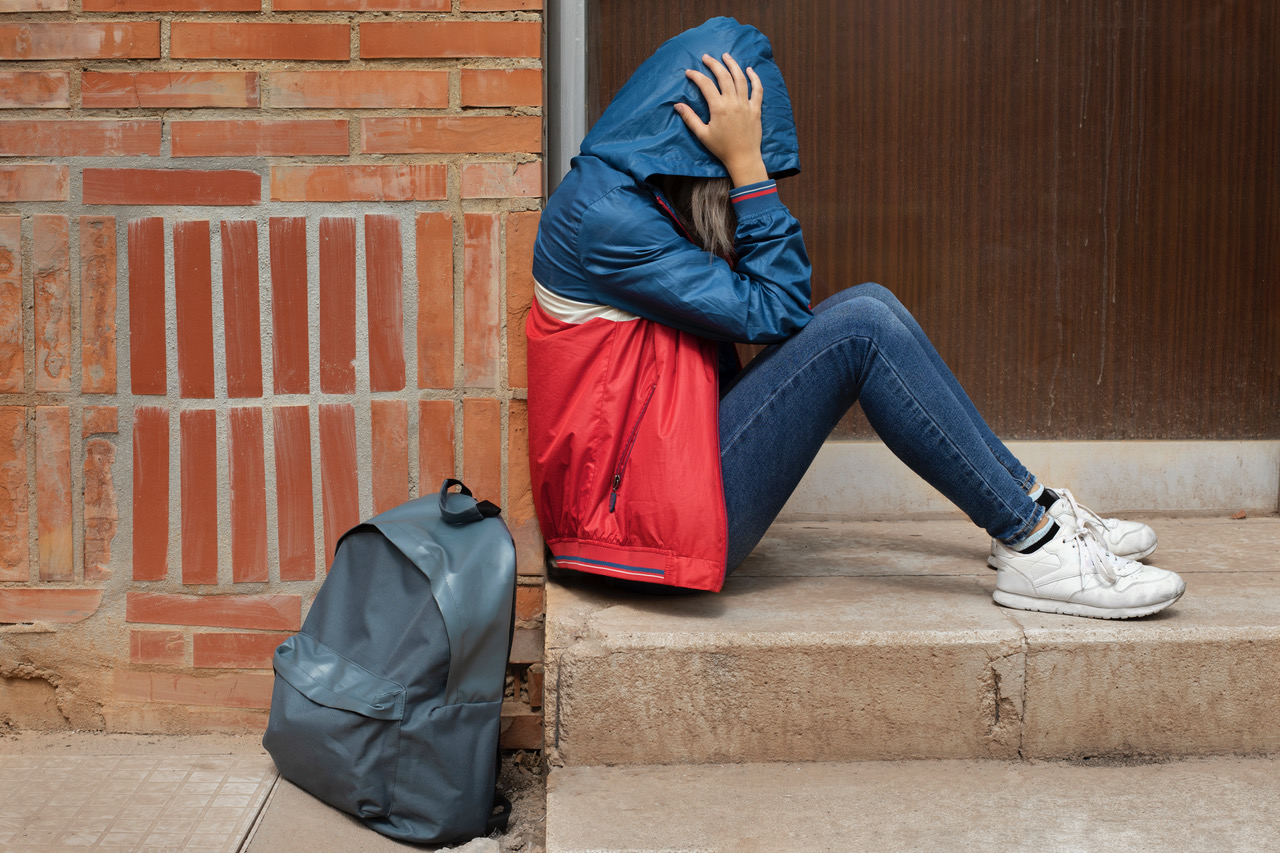Student Mental Health: The Rising Challenge
Farhana Yeasmen Satu

Think about this: Classes, homework, extracurriculars, and perhaps a part-time job are all competing for your attention. There is a lot of strain, and it might feel like the entire world is pressing down on you at times. Finding a student who never gets burned out, anxious about tests, or overwhelmed by deadlines is an extreme rarity. But what if you’re not alone? The reality is that many kids encounter difficulties outside of the classroom. They cope with tension, worry, and possibly even despair. Today, let’s talk about student mental health. It’s a subject that touches everyone in some way, and if we take the time to learn about it, we can make our school a better place for everyone.
Many students experience mental health challenges, two of the most common of those being anxiety and depression. Student mental health is a legitimate concern all over the world. Depression and anxiety, once considered taboo topics, are now increasingly recognized as prevalent mental health challenges affecting students all over the globe. One in four people suffer from mental or neurological disorders worldwide (WHO), including 264 million who suffer from depression. Due to depression and anxiety, suicide is the second leading cause of death for young adults.
Students’ mental health perspective of Bangladesh:
In low- and middle-income nations like Bangladesh, mental health issues are becoming more and more of a problem. A systematic analysis found that the prevalence of mental disorders in Bangladesh ranged from 13.4% to 22.9% for children (5–17 years old) and from 6.5 to 31.0% for adults (18–65 years old). It is a matter of great sorrow that Bangladesh’s mental health services are severely hampered by a shortage of certified mental health specialists.
A study of 1,773 students by the Anchal Foundation, a non-profit organization, found that approximately 72.2% of students encounter some type of mental health condition at some point in their lives. Again, in a systematic review, Mamun et al. [Mental Disorders of Bangladeshi Students During the COVID-19 Pandemic: A Systematic Review] stated that 46.92% to 82.4%, 26.6% to 96.82%, and 28.5% to 70.1% of Bangladeshi students faced mild to severe symptoms of depression, anxiety, and stress, respectively during COVID-19 lockdown.
What depression and anxiety stand:
Depression affects how a person thinks, acts, feels, and handles daily activities. Some of the most commonly experienced symptoms include changes in appetite, sleeping patterns, negative feelings such as lack of concern, concentration, inability to complete tasks, powerlessness, general sickness, and pessimistic in attitude.
Anxiety, on the other hand, is a condition marked by excessive worry and fear about everyday situations. It is normal to feel anxious in certain situations, but when anxiety becomes overwhelming to the situation, it may indicate an anxiety disorder. Symptoms of anxiety disorders can include restlessness, irritability, muscle tension, insomnia, and physical symptoms such as rapid heartbeat, sweating, trembling, and panic attacks.
Depression and anxiety can have a substantial impact on a person’s life, affecting relationships, work or school performance, and overall well-being. Individuals frequently experience symptoms of both illnesses at the same time. Chronic stress, heredity, trauma, and brain chemistry imbalances are all risk factors for developing depression and anxiety.
How depression and anxiety impact students’ lives:
Students suffering from depression and anxiety are almost five times more likely to consider suicide than adults with the same mental health problems. Depression and anxiety can result in a student’s missing classes, ignoring homework or tasks given by institutions, and incomplete personal life work.
Depression and anxiety can lead to social withdrawal, isolation, default to connect with others or social, and lack of motivation. Students also may show outbursts of tearfulness, anger other immoral emotions, often unsuitable. They may show physical impairment such as fatigue, insomnia, and lack of appetite can disrupt their daily functioning. Depression and anxiety can have long-term consequences, affecting student’s future career prospects and quality of their life.
Leading causes of depression and anxiety in students’ lives:
Several factors are involved in increasing depression and anxiety in the students. Students in Bangladesh may have an increasing rate of anxiety and depression if they are not adequately supported and assisted in managing the demands of their academic lives. Because of the stigma associated with mental illness and the lack of services available to them, students may be reluctant to seek treatment or talk about their issues with others. A few causes are:
Firstly, academic pressure is worse in Bangladesh due to the educational system, high student expectations, and test pressure, which has been linked to negative mental health conditions such as stress, panic attacks, anxiety, and depression among Bangladeshi students.
Secondly, increasing rate of using the internet in their day-to-day life whether it is necessary or not. The Anchal Foundations survey found that 85.9% of students blame the internet for their mental health difficulties. 34.3% of students say internet use considerably affects their lives, while 57.2% say it slightly does.
Thirdly, Socioeconomic factors such as poverty, unemployment, and political instability can intensify stress and lead to feelings of hopelessness and despair. Social media pressures also affect students as they navigate complex social dynamics, peer relationships, and social expectations. Comparisons with peers and unrealistic beauty, success, and happiness standards on social media increase such pressures.
Fourthly, the transition of school, college, and university life can trigger mental health issues. Students’ newfound independence, homesickness, bullied by others, the challenge of adapting to a new environment, student loan debt, and the rising cost of living and education can cause stress and anxiety.
Lastly, not limited to, personal factors like genetics, trauma, family history of mental illness, and medical problems might increase anxiety and depression risk. Stigma and cultural barriers to mental health care are major issues.
Coping with depression and anxiety:
Coping with depression and anxiety as a student can be challenging, but several strategies can be used to assist get rid of those unwanted difficulties, including:
Seek support: A student needs to inform family, friends, or a trusted mentor about his or her condition. Many universities also provide counseling services where students can seek aid and support.
Develop healthy habits: Maintaining a balanced diet, engaging in regular exercise, and getting enough sleep can all have a substantial impact on mental health.
Set realistic goals: Break down tasks into adaptable steps and prioritize responsibilities to avoid feeling overwhelmed.
Establish boundaries: learn to say no to additional promises if a student is already feeling stretched thin. Setting boundaries with others can help to release stress.
Engagement with others: Participated in activities that brought students joy and relaxation, such as reading, painting, spending time with pets, and outdoor activities. Stay in touch with friends and loved ones, even if it is through virtual means.
Social Support: Social support is critical during difficult times. Avoid drugs and alcohol since they may make people with depression and anxiety feel better for a short time but will exacerbate the effect in the long run.
What parents can do to help students:
Parents who are concerned about their children need to discuss the signs and symptoms of depression and anxiety. It is important to talk with the child regarding parental concerns. They can encourage their children to communicate their emotions and concerns openly and without judgment. They must communicate patiently, calmly, and empathetically. Students frequently assume they are at fault for their mental health issues, which can result in defensiveness or closing down. To lessen this stigma, parents should convince their children that it is not their fault.
Parents should be aware of potential stressors in their children’s lives, such as academic pressure, social obstacles, family issues, and personal conflict. Help them build appropriate coping methods to deal with their problems. Encourage maintaining a healthy work-life balance, participating in pleasant hobbies, and getting help when necessary.
Treatment plan to reduce student’s depression and anxiety problems:
- Treatment plans to reduce students’ depression and anxiety levels typically involve the combination of therapy, medication, and lifestyle changes.
- Cognitive behavioral therapy is often used to help students challenge and identify negative thought patterns and develop coping strategies. Medications are prescribed by a psychiatrist to alleviate symptoms.
- Lifestyle changes, including regular exercise, adequate sleep, balanced nutrition, stress management methods, and other indispensable component treatments.
- Counselors, therapists, and support groups can provide ongoing support and guidance and students themselves are crucial in executing and maintaining active treatment plans.
- Schools and universities can prioritize mental health education, destigmatize seeking help, and create supportive environments that prioritize well-being.
In conclusion, student mental health is a pressing concern demanding immediate attention. Depression and anxiety once shrouded in silence, are now recognized as significant hurdles impacting student well-being and academic success. The statistics presented in this paper paint a stark picture, highlighting the prevalence of these issues in Bangladesh and globally. This investment in our future generation will not only improve their academic performance but also empower them to lead fulfilling and productive lives.
Writer: Farhana Yeasmen Satu
The writer is a Counseling Psychologist. She can be reached by her email.
Tags: Well-being

![Henry A. Kissinger in 1979 [Neil Leifer/Sports Illustrated, via Getty Images]](/post-images/20231130-kissinger.jpg)
![Professor Abdul Basir, a faculty member in the Department of Islamic History and Culture at DU | Professor Nisar Hossain, Dean of the Faculty of Fine Arts [Image collected]](/post-images/20240822-du.jpg)

![Anjir Liton, former DG of Bangladesh Shishu Academy [Image collected]](/post-images/20240822-shishu-academy.jpg)